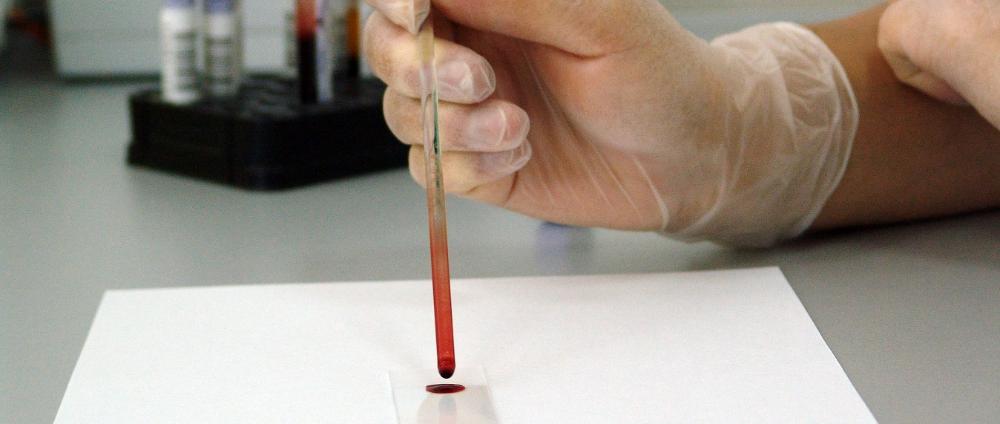Biomarkers and cardiovascular risk – CERG

Do tiny particles in your blood reveal your heart attack risk?
Are the blood levels of microRNAs and subfractions of lipoproteins associated with dangerous plaques in the coronary arteries of heart patients? And can these biomarkers help us reveal who is at high risk of a heart attack?
PhD project: Identification of new circulating biomarkers for risk prediction of lipid-rich coronary plaques and myocardial infarction
Candidate: Julie Caroline Sæther
Disputation: 15th of December, 2023

Background
A heart attack usually occurs when unstable plaques rupture and cause a blood clot in the blood vessels of the heart, the coronary arteries. We know a great deal about the risk factors for such atherosclerosis and subsequent heart attacks. Yet up to one fifth of those who have a heart attack have none of the classic risk factors such as high blood sugar, high blood pressure, obesity or high blood cholesterol levels. We therefore need better models to capture more of those who are at risk of being affected.
In recent years, advanced technology has made it possible to analyze ever smaller components of the substances circulating in our blood. Such biomarkers can tell us much about the condition of the blood vessels and our health risks in the future. The doctoral work of Julie Caroline Sæther looks specifically at two different types of biomarkers in the blood: microRNAs and subfractions of lipoproteins.
There are countless different microRNA molecules in the blood, and these help regulate the activity of our genes. We have previously discovered that several different micro-RNAs are linked to an increased risk of having a heart attack later in life. Julie wants to find out if the microRNA levels can also tell us something about the amount of plaque in the coronary arteries of heart patients - and how stable these plaques are.
Lipoproteins transport cholesterol around the blood, and many know the LDL particles as "bad cholesterol" and the HDL particles as "good cholesterol". However, it is not only the total levels or the distribution between different types of particles that affect cardiovascular risk. The size and density of the different types of lipoprotein particles also play a role, and this is what Julie looks into in her research. Here, too, she is looking at whether the levels of the various subfractions of lipoproteins are linked to the degree of atherosclerosis and plaque stability in patients with established coronary artery disease.
In her third article, Julie investigates whether the biomarkers she finds in the first two articles are also suitable for identifying people who have a heart attack even if they have few of the traditional risk factors. If it turns out that the biomarkers provide extra information beyond what is obtained with the current models, it is possible that blood samples of microRNA and lipoprotein subfractions will be included in future models to detect people who need special follow-up to avoid heart disease in the future.
Lipid levels provide limited information on plaque content in heart patients

Using advanced analyses, we found two types of lipid particles that can potentially tell us something about the lipid content of plaque in patients with stable coronary artery disease. The patients with increased levels of lipoprotein(a) in the blood had, on average, slightly more fatty plaques in the heart's coronary arteries than patients with normal lipoprotein(a) levels. In addition, higher levels of free cholesterol in the smallest HDL particles were also associated to some extent with increased plaque lipid content. The two fatty substances did not, however, give us additional information about the plaque content beyond what we got by measuring traditional risk factors for cardiovascular disease.
Fatty plaques are more unstable than plaques with less fat, and thus increases the risk of a heart attack. However, it is difficult to measure the plaque content in the coronary arteries accurately, and it would be very useful to find biomarkers in the blood that can tell whether the calcifications contain much or little fat.
In the study, we examined the levels of 114 different lipoprotein groups in 56 patients with stable coronary artery disease. The analyzes does not only look at the levels of, for example, plain LDL and HDL cholesterol, but also the size, density and fat content of the various lipoprotein particles. The patients in the study underwent an advanced, invasive examination of the heart's coronary arteries, so that we could study the associations between the various fatty substances in the blood and the content of the most fatty plaques in the blood vessels of each patient.
Among middle-aged and elderly people with a low risk of heart attack, we found no definite relationship between the levels of 112 different lipoprotein particles and future heart attack. In addition to looking at the total levels of, for example, LDL and HDL cholesterol in the blood, we divided these classic lipoproteins into groups based on size, density and concentration of lipids in the lipoprotein particles. Thus, we had the opportunity to look at whether, for example, small and dense HDL and LDL particles with a high concentration of cholesterol and other fatty substances were differently associated with heart attack risk than larger and less dense particles with a low fat content.
The study includes 50 people who had a heart attack within five years despite being healthy and having few or none of the classic risk factors when they participated in the third health survey in Nord-Trøndelag between 2006 and 2008. We compared them with 100 participants who did not have a heart attack within ten years but otherwise were similar to the participants who had a heart attack.
The main analyzes showed no clear connection between any of the 112 subfractions of lipoproteins and the risk of having a heart attack. In less rigid analyses, we found a connection between a high concentration of apolipoprotein A1 in the smallest HDL particles and an increased risk of future heart attack. For men, a low concentration of several lipids in large HDL particles was also linked to an increased heart attack risk. So, although we did not make any definite findings, the results provide a basis for looking more closely at whether subfractions of HDL particles can give us useful information about who is at increased risk of suffering a heart attack.
Micro-RNA in the blood can reveal dangerous plaque in heart patients

The more fatty plaques the heart patients had in their coronary arteries, the higher were the levels of micro-RNA 133b in their blood. Thus, a blood test that analyzes this micromolecule can possibly help us to identify which patients are at high risk of having plaques that are likely to rupture and cause a heart attack.
Micro-RNAs are tiny molecules that regulate the activity of our genes. There are several thousand such micromolecules, and in our study we measured the levels of 160 different micro-RNAs in 47 patients with stable coronary artery disease. We also took ultrasound images of the inside of the patients' coronary arteries, and with the method of near-infrared spectroscopy we found the most fatty plaques.
Of all the microRNAs we examined, it was microRNA 133b that was most closely linked to plaque lipid content. The correlation was not weakened when we adjusted for traditional risk factors for cardiovascular disease. This suggests that micro-RNA 133b itself can reveal fatty plaques, but the strength of the association was moderate, and larger studies are needed to provide firm conclusions.
Supervisors
-
Anja Bye Professor and head of research group in Cardiogenomics
+4793232057 anja.bye@ntnu.no Department of Circulation and Medical Imaging -
Turid Follestad Associate Professor of Medical Statistics
+4798066880 turid.follestad@ntnu.no Department of Public Health and Nursing -
Erik Madssen Associate Professor
erik.madssen@ntnu.no Department of Circulation and Medical Imaging
Researchers who have contributed to articles from the PhD project
-
Tone Frost Bathen Professor
+47-73551355 +4795021097 tone.f.bathen@ntnu.no Department of Circulation and Medical Imaging -
Anja Bye Professor and head of research group in Cardiogenomics
+4793232057 anja.bye@ntnu.no Department of Circulation and Medical Imaging -
Håvard Dalen Professor
+4772828027 havard.dalen@ntnu.no Department of Circulation and Medical Imaging -
Turid Follestad Associate Professor of Medical Statistics
+4798066880 turid.follestad@ntnu.no Department of Public Health and Nursing -
Bruna Gigante Karolinske Institutet, Stockholm
-
Guro F. Giskeødegård Professor
+47-73598916 +4790550347 guro.giskeodegard@ntnu.no Department of Public Health and Nursing -
Marie Klevjer
marie.klevjer@ntnu.no -
Erik Madssen Associate Professor
erik.madssen@ntnu.no Department of Circulation and Medical Imaging -
Torbjørn Omland University of Oslo
-
Ragnhild Elisabet Nyhus Røsbjørgen
+4795209860 +4772828065 ragnhild.rosbjorgen@ntnu.no -
Helge Rørvik Røsjø University of Oslo
-
Sigrid Bakken Sperstad Institutt for sirkulasjon og bildediagnostikk, NTNU
-
Julie Caroline Sæther PhD
julie.c.sather@ntnu.no Department of Circulation and Medical Imaging -
Elisabeth Kleivhaug Vesterbekkmo PhD
+4792084041 elisabeth.k.vesterbekkmo@ntnu.no Department of Circulation and Medical Imaging -
Rune Wiseth
+4772828145 rune.wiseth@ntnu.no Department of Circulation and Medical Imaging
Send us an e-mail:
cerg-post@mh.ntnu.no
Send us regular mail:
NTNU, Fakultet for medisin og helsevitenskap
Institutt for sirkulasjon og bildediagnostikk
Postboks 8905
7491 Trondheim
Visit us:
St. Olavs Hospital
Prinsesse Kristinas gt. 3
Akutten og Hjerte-lunge-senteret, 3. etg.
7006 Trondheim





